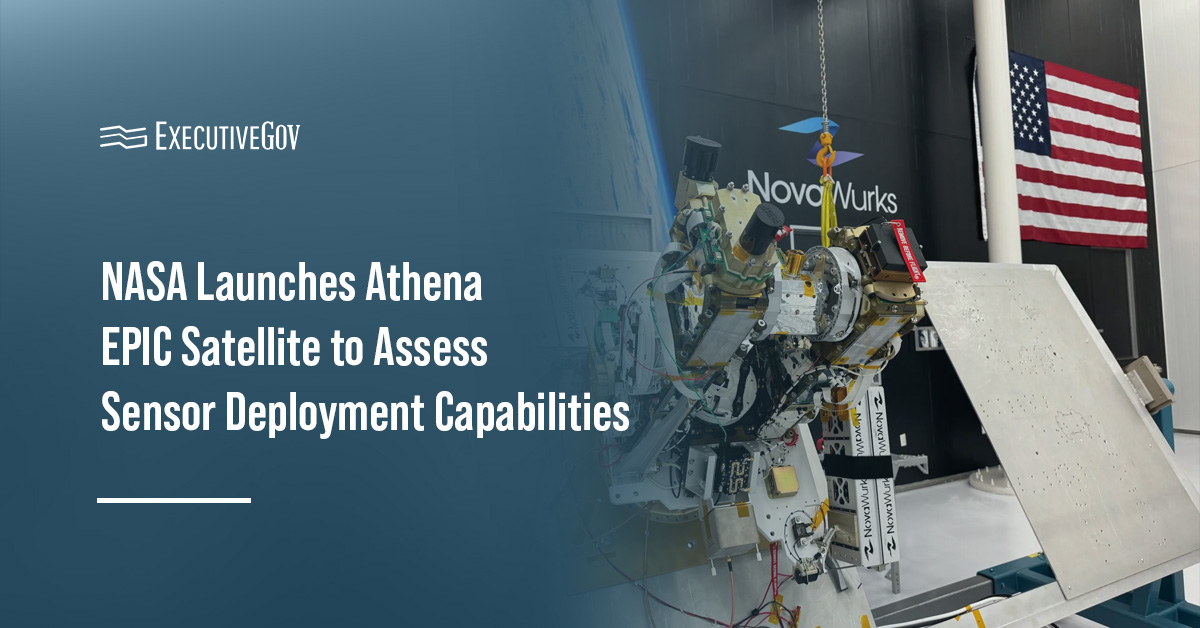NASA is set to deploy the Athena Economical Payload Integration Cost, or Athena EPIC, mission onboard a SpaceX Falcon 9 rocket launched from Vandenberg Space Force Base, California, on July 22.
Join the Potomac Officers Club’s 2025 Air and Space Summit on July 31 and learn about various air and space defense initiatives.
Table of Contents
Athena EPIC Satellite
The agency said Friday the test launch aims to evaluate the viability of a new satellite platform intended to accelerate the deployment of sensors into space. The platform is built using Hyper-Integrated Satlets and is engineered to share resources among payloads onboard. It is intended to manage routine functions, negating the need for each payload to do so.
The Athena sensor payload, developed at NASA’s Langley Research Center, includes an optical module, a calibration module and a new sensor electronics assembly. It was built using spare parts from the Clouds and the Earth’s Radiant Energy System, or CERES, mission.
What Are Hyper-Integrated Satlets?
The Athena EPIC utilizes the HISats modular satellite design, developed by NovaWurks. It reportedly functions like interlocking building blocks that can be assembled into larger structures called SensorCraft. The configurable SensorCarft conforms to various sizes and shapes to match payload designs, enabling the sharing of resources among multiple payloads.
“Instead of Athena carrying its own processor, we’re using the processors on the HISats to control things like our heaters and do some of the control functions that typically would be done by a processor on our payload,” said Kory Priestley, principal investigator for Athena EPIC.
“We don’t need as many capabilities built into our key instrument because it’s being brought to us by the satellite host. We obtain greater redundancy and it simplifies our payload,” Priestley added.






